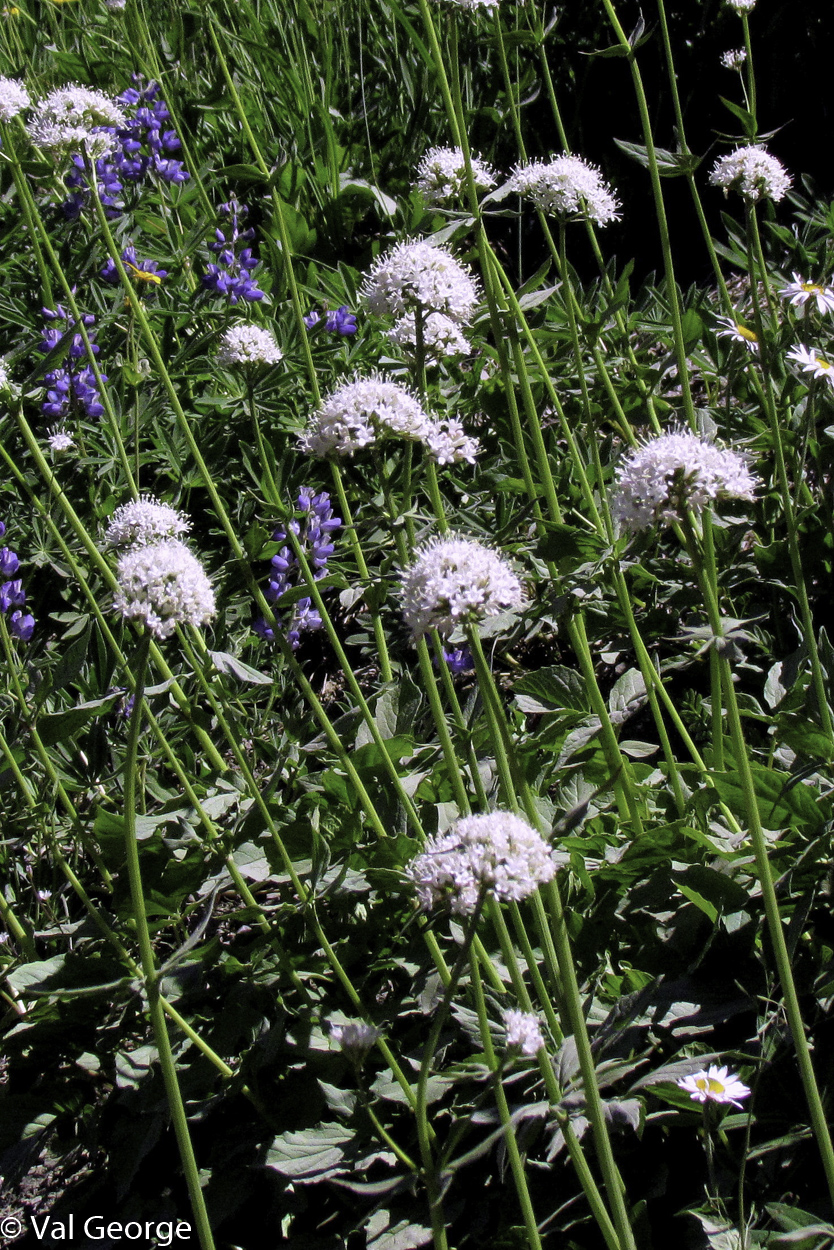Valeriana sitchensis – sitka valerian
Common Name
sitka valerian
Family
Caprifoliaceae
Scientific Name
Valeriana sitchensis
Soil Moisture Regime (SMR)
- Medium (M)
- Wet (W)
Soil Nutrient Regime (SNR)
- Rich (R)
Hitchcock, C. Leo, and Arthur Cronquist. Flora of the Pacific Northwest: An Illustrated Manual © 1973. Reprinted with permission of the University of Washington Press.
General / Habitat
- Perennial plant
- One of the most common inhabitants of subalpine meadows in our region
- Can also grow in thickets and open forest from middle to high elevations
Key Identifying Characteristics
- Form: Leafy stems growing from a stout, sour-smelling rhizome from 30-120 cm tall, typically smooth but sometimes short-hairy
- Leaves: Opposite, large, in 2-5 pairs on stem, divided into 3-7 coarsely toothed leaflets, with the terminal leaflet being the largest
- Flowers: white to pinkish, small, thickly sweet-smelling, petals fused into 5-lobed tube around distinctly protruding stamens, numerous borne in dense, terminal, slightly-rounded cluster
- Fruit: “Seeds” (achenes) ribbed, egg-shaped, and bearing feathery plume to aid in wind dispersal
Lookalikes
- Another smaller Valerian, Valeriana scouleri
- has smooth-edged leaflets and fewer stem leaves
Interesting Characteristics
- Rhizome is distinctly sour-smelling, especially after first frost
- Alaskan Tlinglit name for the plant translates to “medicine that stinks”
- Used medicinally in Europe and by North American aboriginal peoples for various purposes
External References
Sources
Douglas, G.W. et al (Editors). 1998-2002. Illustrated Flora of British Columbia, Volumes 1 to 8. B.C. Min. Environ., Lands and Parks, and B.C. Min. For., Victoria, B.C.
Pojar, J. and A. MacKinnon. 2014. Plants of Coastal British Columbia Including Washington, Oregon & Alaska. B.C. Ministry of Forestry and Lone Pine Publishing. Vancouver, B.C.



